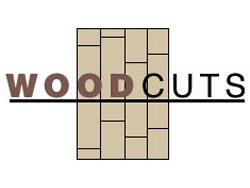Wood Cuts - July 2007
By Rick Berg
One of the selling points solid wood floors have always had over other flooring choices was that they quite literally never wear out, because they can be sanded and refinished multiple times. For proof, look at the Louvre in Paris or the Hermitage in St. Petersburg, Russia. Their wood floors have lasted for hundreds of years—probably a bit longer than most of us will own our homes.
Engineered wood floors used to have something of a bad rap when it came to longevity, because the perception was that their wearlayers didn’t permit sanding and refinishing. That was never true, of course, but today’s finish technology is so durable that most wood floors never have to be re-sanded at all. At most, periodic re-coatings can keep an engineered wood floor looking like new for years.
“With proper maintenance, the finish on today’s wood floors will last for many years,” says Ed Korczak, CEO of the National Wood Flooring Association. “And engineered wood flooring, because it’s appropriate for use in below grade applications, gives homeowners even more options.”
Don Conner, president of NWFA Certified Professionals Inc., as well as technical product development director for Mullican Flooring, says the combination of improved factory-applied finish technology and new developments in flooring construction means that engineered flooring has a lifespan similar to that of solid wood flooring.
“When people talk about the wearlayer on wood flooring, sometimes they’re referring to the finish coat. Most of us are probably referring to the top layer of the wood itself,” says Conner. “Either way, engineered wood flooring is more like solid wood flooring than ever before, and in some cases it also has some advantages over solid wood flooring. If you consider the finish coat the wearlayer, then a wood floor will never wear out, because as soon as the finish begins to wear down, you simply recoat the floor and it’s good to go for another five years or so.
“Most finishes today are re-coatable fairly easily, and very rarely will you see the finish wear down to bare wood. That’s almost physically impossible today because of the high abrasion finishes most manufacturers are using today. These finishes are so good that 15 to 25 year warranties are now common. These finishes, which are typically UV cured acrylic polyurethane, also have elasticity, so the finish moves with the wood.”
In those rare instances when a wood floor has to be sanded down to bare wood and refinished—if the customer wants a color change, for example—the top wood layer of most engineered floors will accommodate that easily. While some entry level engineered wood has a top layer less than one millimeter thick (1/25th of an inch or less), most now have top layers ranging from 2 to 3 millimeters (1/12th to 1/8th of an inch), and some go as high as 4 millimeters (about 1/6th of a inch). Since a skilled floor sander will typically take off 1/64th of an inch or less of wood (about .4 millimeters), a 2 or 3 millimeter top layer should be good for multiple sandings. By comparison, a 3/4 inch solid wood floor has a sandable thickness of about 1/4 inch (about 6 millimeters—the thickness from the top of the floor to the tongue).
“Really, anything 2 millimeters thick or thicker is easily sandable,” says Conner.
What really sets today’s engineered wood floors apart is the technology used to create the top layer, as well as the ply construction.
“Five years ago, engineered floors usually used a rotary cut top layer, which tended to produce kind of a plywood look to the floor,” says Conner. “Today we have offset rotary cut, sliced and sawn top layers, which provide a much more natural appearance to the top layer. Even with a trained eye, it would be hard to tell an engineered wood floor from a solid wood floor just by looking at the surface.”
One of the great advantages of engineered wood flooring is that its dimensional stability allows it to be used in below grade and other applications where solid wood flooring might not be recommended. Conner says the construction technology behind today’s engineered wood flooring makes that even truer. “Most engineered products used to be three-ply, but today most are five-ply or more, which creates even more dimensional stability than we had before,” he says.
Manufacturers today also offer a wide range of decorator options in their top layers. Top layers are available in just about any wood species imaginable—including some of the more popular imported species—as well as in a variety of stain colors. They’re also available in antique, distressed or hand sculpted designs.
“Any other flooring option is, by nature, a temporary floor,” says Conner. “A wood floor, whether it’s solid or engineered, is for the life of the structure.”
Copyright 2007 Floor Focus
Related Topics:Engineered Floors, LLC, NWFA Expo
